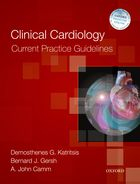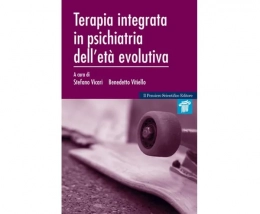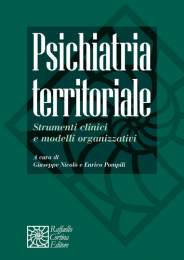Non ci sono recensioni
- Over 600 tables dissect and summarise the key points of all the latest ESC and AHA/ACC guidelines, in every area of cardiovascular disease
- Acts as a fully comprehensive textbook as well as a state-of-the-art guideline reference, with 85 chapters packed with guidance on all aspects of evidence-based practice
- Includes a year's access to a regularly updated online version, available for individual and institutional subscription
- Incorporates the very latest published knowledge on the clinical value of existing and evolving tests, as well as classification of definitions of the most complex clinical conditions
- Special care has been taken to include the most recent information on medical genetics, with a glossary of the most used terms to demystify the jargon
- Features clear recommendations on the use of the latest therapies, in a fast evolving area where coherent advice is difficult to extract from published guidelines and journals
- Over 140 full-colour illustrations aid diagnosis and summarise knowledge succinctly and clearly
Clinical Cardiology: Current Practice Guidelines is an essential tool for the busy clinician, providing succinct yet detailed access to the most recent trial and guideline data supporting practice and patient management in cardiology.
ESC and ACC/AHA guidelines are continually being updated and often overlap in their advice, making it difficult for the cardiologist to obtain a clear picture of the right way to diagnose and treat disease according to the latest evidence base. Written by leading authorities in the field, this book, together with its twice yearly-updated online version, provides a solution. The authors have scrutinized all available guidelines and research, collating the results into over 600 easily-accessible tables which provide the most recent recommendation by both ACC/AHA and the ESC on every clinical issue. These recommendations are considered in the context of the latest research and evolving evidence most relevant to the clinician, to give detailed insights into how best to proceed with treatment.
This is discussed as part of 84 comprehensive chapters on pathophysiology, diagnosis and management. Each chapter offers concise information on definition, epidemiology, and pathophysiology of the disease, reflecting the latest published research. Following this is clear and instructive discussion of possible presentations and all clinical investigations that may be necessary. The authors have rigorously examined the implications of published guidance, and where appropriate considered new evidence that questions the validity of specific recommendations, as well as the opinion of established experts and other data such as FDA alerts. This guidance is supported by over 140 full-colour images, which reinforce key points and clarify difficult concepts. The online version is updated twice a year to ensure a continuously up-to-date reference source over time, which will establish itself as an essential part of everyday practice.
Accompanied by a year's free access to the online version and providing at-a-glance access to the best guidance in cardiology, Clinical Cardiology: Current Practice Guidelines offers a diagnosis and management toolkit which no cardiologist can afford to be without.
Grown-up Congenital Heart Disease
1: General Principles
2: Ventricular Septal Defects
3: Atrioventricular Septal Defects
4: Atrial Septal Defects
5: Patent Ductus Arteriosus
6: Right Ventricular Outflow Tract Obstruction
7: Left Ventricular Outflow Tract Obstruction
8: Coarctation of the aorta
9: Tetralogy of Fallot
10: Transposition of Great Arteries
11: Ebstein's Anomaly
12: Anomalous PV Connections, AV Malformations, Coronary and LV Abnormalities
13: The Fontan Patient
14: Eisenmerger syndrome
Valve Disease
15: General Principles
16: Mitral Stenosis
17: Mitral Regurgitation
18: Aortic Stenosis
19: Aortic Regurgitation
20: Tricuspid Valve Disease
21: Pulmonary Valve Disease
22: Prosthetic Heart Valves
Hypertension
23: Classification and Pathophysiology of Hypertension
24: Primary (essential) hypertension
25: Secondary (Secondary Hypertension)
Coronary Artery Disease
26: Epidemiology and Pathophysiology of Coronary Artery Disease
27: Unstable Angina and Non-ST Elevation Myocardial Infarction
28: Acute Myocardial Infarction
29: Stable Coronary Artery Disease
Heart Failure
30: Classification, Epidemiology and Pathophysiology of Heart Failure
31: Chronic Heart Failure
32: Heart failure with Preserved LVEF
33: Acute Heart Failure and Cardiogenic Shock
Cardiomyopathies
34: Classification of Cardiomyopathies
35: Dilated Cardiomyopathy
36: Hypertrophic Cardiomyopathy
37: Restrictive Cardiomyopathy
38: Arrhythmogenic Right Ventricular Cardiomyopathy/Dysplasia
39: Peripartum Cardiomyopathy
40: Tachycardiomyopathy
41: Stress-induced Cardiomyopathy
42: Iron-loaded Cardiomyopathy
43: Left Ventricular Non-Compaction
Acute myocarditis
44: Acute Myocarditis
Pericardial Diseases
45: Acute and Relapsing Pericarditis
46: Pericardial Effusion and Cardiac Tamponade
47: Constrictive Pericarditis and Congenital Pericardial Defects
48: Pericardial Anatomy and Congenital Pericardial Defects
Tachyarrhythmias
49: Classification of Tachyarrhythmias and Mechanisms of Arrhythmogenesis
50: Classification, Epidemiology and Presentation of Supraventricular Tachycardias
51: Atrial Tachycardias
52: Atrial Fibrillation
53: Atrioventricular Junctional Tachycardias
54: Atrioventricular Reentrant Tachycardias
55: Ventricular Arrhythmias
Genetic Channelopathies
56: Definitions of Inherited Arrhythmias
57: Long QT syndrome
58: Short QT syndrome
59: Brugada Syndrome
60: Catecholaminergic Polymorphic Ventricular Tachycardia
61: Early Repolarization Syndromes
Bradyarrhythmias
62: The Cardiac Conduction System
63: Sinus Nodal Disease
64: Atrioventricular and Intraventricular Block
65: Conduction Disease in Specific Conditions
Sync and Sudden Cardiac Death
66: Syncope
67: Sudden Cardiac Death
Implantable Devices
68: Technical issues
69: Complications of Implantable Devices
Diseases of the Aorta
70: Acute Aortic Syndromes
71: Thoracic Aortic Aneurysms and Other Conditions
72: Genetic Syndromes Associated with Thoracic Aneurysm and Dissection
73: Inflammatory Diseases Associated with Thoracic Aortic Disease
Venous Thromboembolism
74: Pulmonary Embolism
75: Deep Vein Thrombosis
Pulmonary Hypertension
76: Definitions and Classification of Pulmonary Hypertension
77: Pulmonary Arterial Hypertension and Hypertension Associated with Pulmonary Venous Abnormalities
78: Pulmonary Hypertension Associated with Left Heart Disease, Lung Disease, and Chronic Thromboembolic Pulmonary Hypertension
Infective Endocarditis
79: Infective Endocarditis
Rheumatic Fever
80: Rheumatic Fever
Athelete's Heart
81: Athelete's Heart
Cardiac Tumours and Pseudoaneurysms
82: Cardiac Tumours
83: Pseudoaneurysms of the Heart
Cardiovascular Disease in Pregnancy
84: Cardiovascular Disease in Pregnancy
Cardiovascular Drugs
85: Cardiovascular Drugs
Appendices




